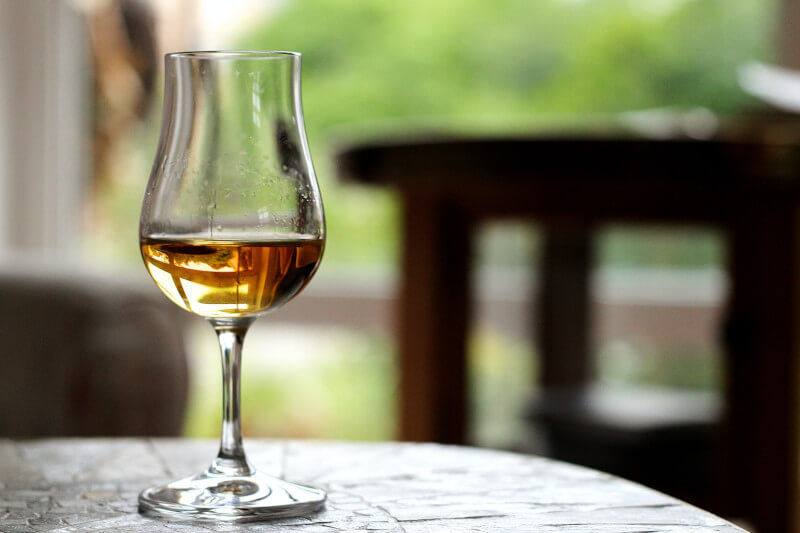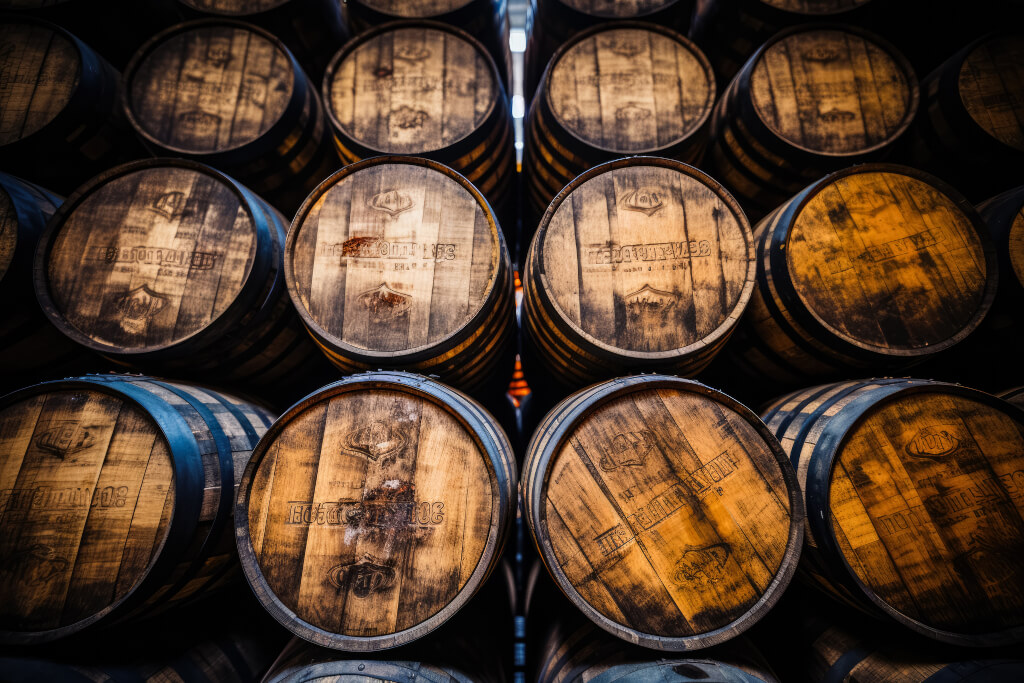Whisky making is a sophisticated process, and there are many different ways to improve the spirit’s flavor, complexity, and aroma. Re-racking is one such method that has been gaining popularity in the bourbon market.
Whisky Ageing and Wood Interactions Explained
The spirit and the oak engage in a mutually transforming dance over time, with each factoring heavily toward the final flavor character. Due to their abundance and low cost, the business relies heavily on casks originating from the United States that last housed bourbon.
Nonetheless, distillers have experimented with more exotic casks, such as ex-sherry or rum, to add a different character to the whisky, thanks to its increasing popularity and the search for unique flavor combinations. There is, however, a catch. Although these casks offer a complex array of flavors, they come at a much higher price. Get ready to re-rack your brain.
What is Re-racking?
Simply said, re-racking is the process of moving whisky from its present cask into a new one, typically one that previously housed a different spirit. The whisky has a brief but significant interaction with a different kind of wood throughout this procedure, which takes place within the safety of a bonded facility.
At its core, whisky production is a delicate dance between time, technique, and tradition. Yet, even in this age-old industry, innovation finds its way, challenging norms while paying homage to the legacy. Re-racking emerges as one such innovation, a subtle yet significant tweak in the maturation process.
The Nuts and Bolts of Re-racking
Re-racking, simply put, is a transitory phase in a whisky’s life. When a distiller deems that a whisky has absorbed enough character from its initial cask, it’s time for a change. The liquid is meticulously transferred from its original barrel to a new one – the finishing cask. This cask, having previously hosted another spirit, introduces a myriad of new flavors and nuances to the maturing whisky.
This transition isn’t hasty. It’s akin to introducing two master musicians and letting them collaborate. Each cask has its own story, its history of spirits, and its resulting flavors. By allowing the whisky to ‘meet’ this new cask, distillers grant it an opportunity to evolve, enrich its palette with new notes, and truly elevate its profile.
Why Re-racking Matters
From a distiller’s perspective, re-racking is more than just a process; it’s an art form. Whisky is a living entity, ever-evolving, ever-adapting. As it rests in its wooden abode, it’s continually extracting compounds – tannins, lignins, and more. Each of these compounds plays a pivotal role in shaping the whisky’s character. Over time, however, the influence of the initial cask may start to wane. The extraction rate decreases, leading to a plateau in the whisky’s flavor development.
By introducing the whisky to a new cask environment, the distiller essentially reignites the spirit’s maturation process. The finishing cask, ripe with its unique characteristics, breathes new life into the whisky, ensuring its growth doesn’t stagnate. This process is particularly crucial when aiming for a specific flavor profile or when crafting limited edition releases. The finishing casks, often having hosted premium spirits, bestow upon the whisky an unmatched depth and complexity.
Cask-Finishing Alchemy
Although the word “finishing cask” has a certain air of sophistication to it, it refers to a barrel that has previously held spirits other than the one being aged in it now. These barrels have the silky notes of red wine and sherry as well as the tropical punch of rum and the zesty appeal of tequila. Virgin oak casks, which have never been used to age any alcohol before, are also essential to this finishing procedure.
Due to their higher price, finishing barrels are usually only used for a limited amount of time. As a result, the whisky can absorb only the flavors it needs, and the cask can be used again and again, saving money. Finishing barrels are becoming increasingly important in adjusting aged whiskies to modern taste preferences.
Possibilities for Re-Racking

Scotch Whisky has undergone a resurgence because of recent changes made by the Scotch Whisky Association, which have opened the door for distillers to employ a wider variety of casks in the aging process. There are still some conditions, though. For example, you can’t use a cask that has housed a beverage that was flavored, sweetened, or fruited. So, while a bourbon completed in a sherry or mezcal cask is possible, don’t look for one aged in a gin or cider barrel. In the world of re-racking, the usual suspects are:
- Sherry adds a nutty, fruity depth of flavor.
- Red wine imparts a tannic core and fruity refinement.
- Port has a rich sweetness from the berries.
- The rum enhances the drink’s tropical flavor.
- Tequila has a light agave flavor.
- Mezcal has a smokey flavor that sets the tone.
- The familiar yet more nuanced flavor of bourbon is achieved by reusing bourbon casks.
- Rye contributes a peppery, spicy flavor.
- The virgin oak gives off an earthy, natural allure.
What Do Master Distillers Have to Say About It?
Amidst the chambers of bourbon distilleries, a vivid tapestry of opinions unravels about the art of re-racking. Lydia Holloway, the chief distiller at Red Creek Distillery, has long been an advocate of the technique. For Lydia, re-racking isn’t just a part of the maturation process; it’s akin to a painter choosing to layer colors, each new cask adding depth and perspective to the final masterpiece. Contrarily, John Keaton of Highland Barrels views re-racking with a touch of skepticism. He believes that while it does offer a fresh palette of flavors, the true essence of bourbon lies in its authentic interaction with the original cask. For him, a bourbon’s identity gets molded by that first connection, and any subsequent introduction to new barrels might compromise its originality.
Elena Mitchell, from the renowned Blue Mountain Distillery, adopts a more experimental stance. She’s known for her signature editions that masterfully combine the robustness of bourbon with the delicacy of other spirits like sherry or port, all thanks to re-racking. She argues that the essence of distillation is innovation, and re-racking is a nod to the evolving palates of bourbon enthusiasts. On the other hand, Louis Gray from Everbrook Distillers takes a more balanced approach. Louis often emphasizes the importance of timing in re-racking. He contends that while introducing bourbon to a finishing cask can yield exquisite results, the timing must be impeccable. For him, it’s not about rejecting the past but harmonizing the old and the new.

